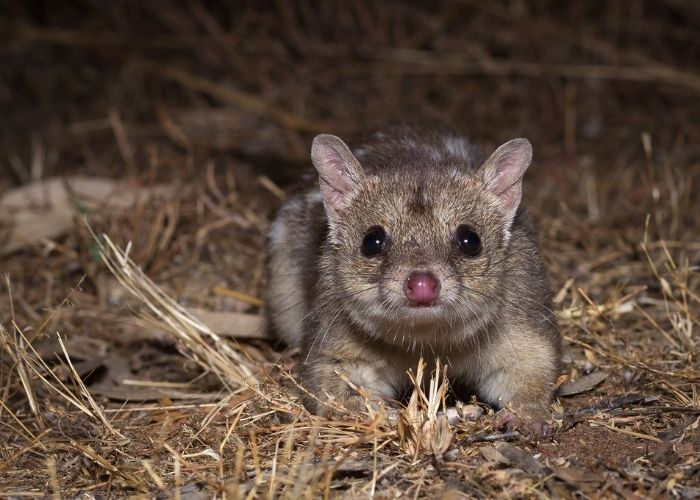Australian Wildlife Conservancy (AWC) is working with four organisations on a new collaborative research project at Brooklyn Wildlife Sanctuary that aims to boost the survival prospects of the endangered Northern Quoll.
AWC joins Terrain NRM, Gulf Savannah NRM, James Cook University and Western Yalanji Traditional Owners on the project which received grant funding from the Australian Government’s Environment Restoration Fund. Together, the group of organisations will explore artificial dens for quolls, genetic research and controlled burn programs. They will also trial conservation methods and investigate how quolls in Far North Queensland have survived the invasion of cane toads.
Northern Quoll numbers dropped dramatically when cane toads spread through northern Australia. Only found in Queensland, Western Australian and the Northern Territory, the quolls have disappeared from most of their range in Queensland and over half their range in the Northern Territory, while fast disappearing in Western Australia as well. Populations have also been affected by feral cats and habitat loss and change.
 Wayne Lawler/AWC
Wayne Lawler/AWC
Dr Manuela Fischer, AWC Wildlife Ecologist, welcomed the opportunity to research one of the last remaining populations of a species that has declined significantly since the introduction of the cane toads.
“It’s great to collaborate on a project that will enable us to better understand the Northern Quoll population on Brooklyn Wildlife Sanctuary and across Far North Queensland,” Dr Fischer said.
“AWC will commence the first genetic testing on the population in the coming months, which will inform options and strategies moving forward for the conservation of the species. We also hope it will give us a better understanding of how this population has persisted despite the presence of cane toads.”
Terrain NRM’s Dr Andrew Dennis said; “Like a range of other native animals, quolls eat cane toads and are poisoned, and with their short life span and their annual male die-off the population is particularly vulnerable.
“Some populations, like the one at Brooklyn Wildlife Sanctuary near Mt Carbine, have managed to survive cane toads. It’s possible they’ve learned not to eat them. Now we want to foster their recovery in these areas and expand their home ranges.”
Artificial dens, previously only used on rehabilitating mine sites, will be installed just beyond known quoll home ranges, and surveillance cameras will be set-up.
“If the dens are successful in drawing quolls back out into flat savannah land, they may be a useful tool to reconnect isolated populations of quolls,” Dr Dennis said.
 Wayne Lawler/AWC
Wayne Lawler/AWC
James Cook University researchers, with AWC, will build on current genetic sampling projects which have found northern quolls are now divided into four distinct genotypes and their genetic diversity declines in isolated populations within each area.
James Cook University’s Dr Conrad Hoskin said with isolated populations there were important genetic considerations to include in conservation efforts.
“Population declines, coupled with lack of gene flow between populations, can lead to issues such as inbreeding,’’ he said. “The genetic component of this project will help us to better understand where we need to connect populations or possibly improve genetic resilience with translocations.”
Western Yalanji Traditional Owners will also be working with AWC on regular fire management, blending traditional and western methods, to improve habitat quality.
Gulf Savannah NRM CEO Zoe Williams also welcomed the new project.
“This is a fantastic opportunity to harness the knowledge and skill sets of many different people,” she said. “It will bring together a mix of traditional knowledge, ecological skills and genetic research capabilities to support the recovery of the Northern Quoll.”
For more information on the Northern Quoll, click here.
Support Australian Wildlife Conservancy's science-led conservation work and safeguard the future of Australia's native species
Donate Now